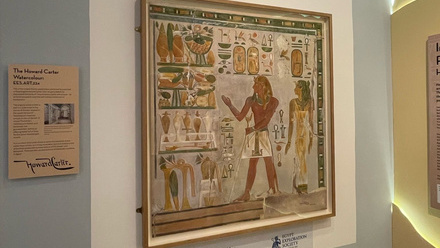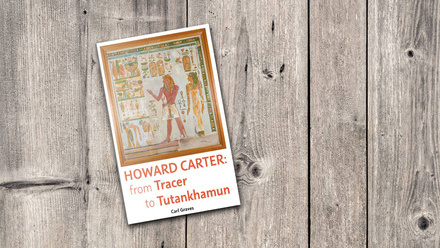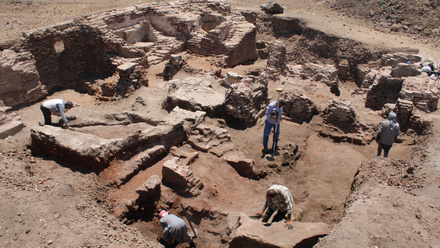Reading the Abydos Block Statue of Amenhotep
By Francesca Kenney
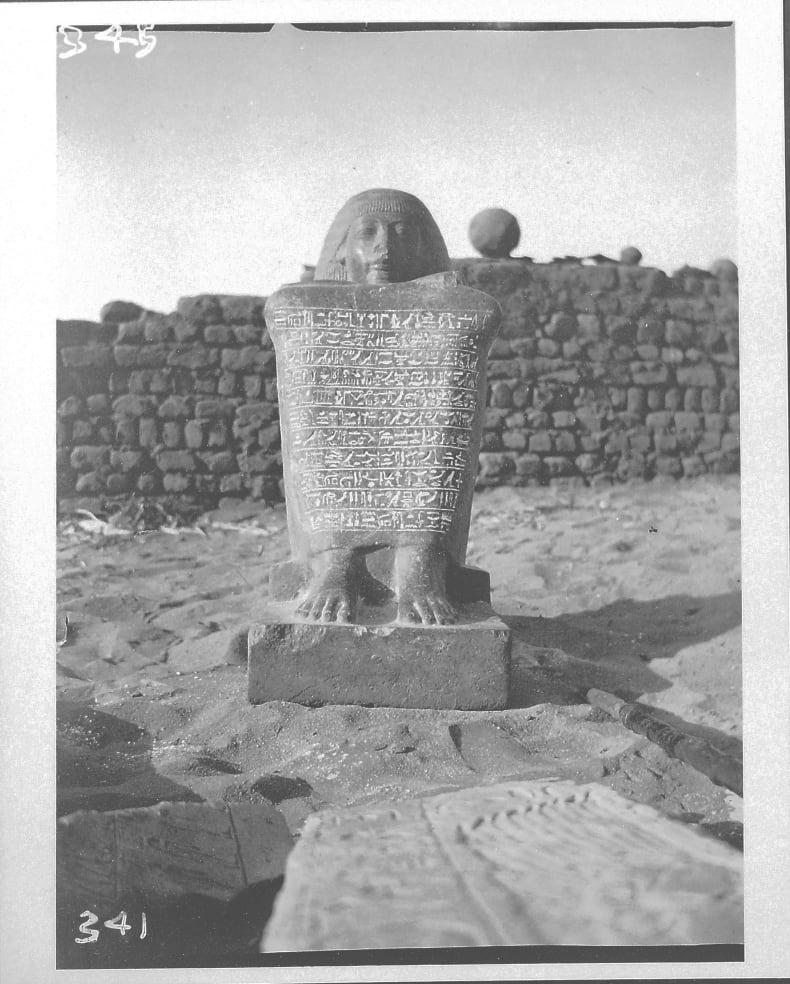
|
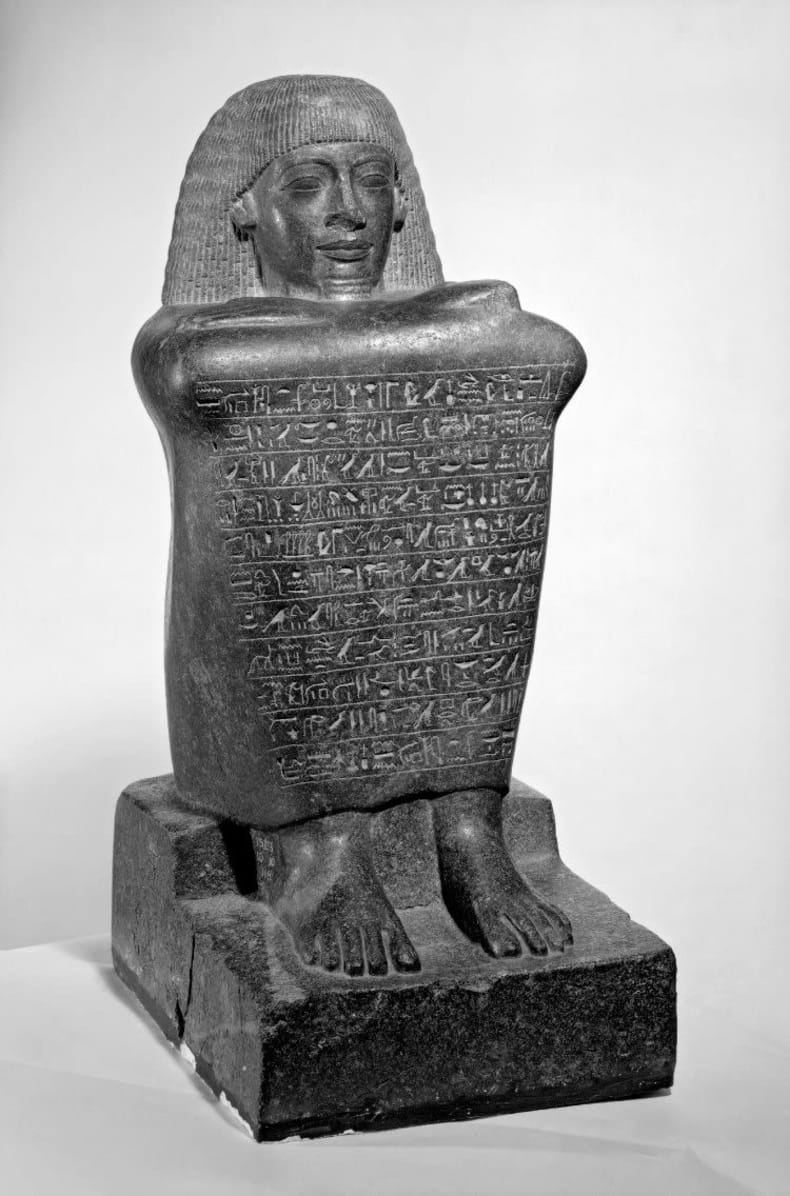
|
A photograph of the block statue in 1903 (glass-plate negative AB-II.NEG.345, left) beside a modern photo of the statue in the British Museum (EA623, right © Trustees of the British Museum).
This granodiorite block statue was found at Abydos during the 1902-03 excavations by Flinders Petrie on behalf of the Egypt Exploration Society (EES), or Egypt Exploration Fund (EEF) as it was known at the time. Through Petrie’s publication of this season we know that the statue was found within the Temple of Osiris, specifically ‘just inside’ the pylon of Thutmose III (Petrie 1903: 36). This highlight looks through archival material in order to illuminate this statue’s journey from Abydos to its current location at the British Museum.
The statue itself belonged to an Eighteenth Dynasty man named Amenhotep. It measures 73.3 cm tall, 33 cm wide, and 43.2 cm deep. When describing the statue, Petrie remarked on its ‘graceful, and finer than usual’ appearance (Petrie 1903: 36). He also noted that this statue is unusual to other block statues as Amenhotep is shown sitting on a low step.
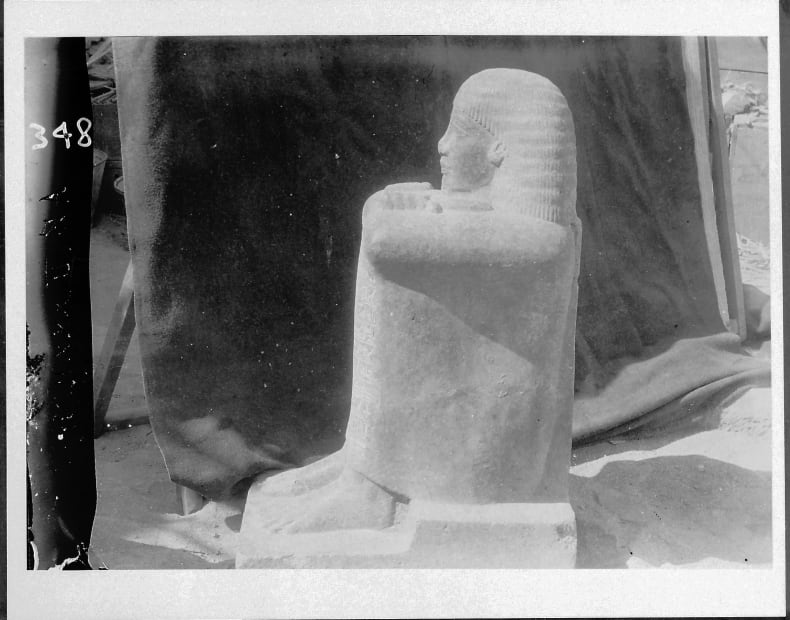
Profile of the statue of Amenhotep showing him sitting on a low step (AB-II.NEG.348)
The front of the statue bears an eleven-line long inscription which, when translated, reads as a prayer to Osiris. The inscription also gives insight into the roles Amenhotep held during his lifetime. Amenhotep was the king’s scribe, steward of Memphis, and overseer of the house of silver and gold. Within the Abydos publication for this season's work, F. Ll. Griffith (Petrie 1903: 45) translates the statue:
Favour granted by the king, and Osiris Onnophris, the great god in Abydos; the king’s scribe, steward of Memphis, superintendent of the treasuries of silver and golds, Amenhotep.
He says: ‘I have come unto thee, O lord of U-Pek, my prayers are unto thy ka each day: I give thee glory, I exalt and glorify the beauties of thy face. Let there be given unto me offerings of bread and beer, oxen and fowl, cloth and thread, incense and ointment, water, wine and milk. May I be anointed with the best unguent and oil that has been cast off from the forehead of the god: may I receive fillets in the feast of Uag, of green and red cloth. May I enter the Neshem-boat (the sacred boat of Osiris) as a perfect spirit, may I not be parted from the servants of Horus. I am the one (who loveth) truth, detesting evil, without crime’
For the ka of the sab, on the right hand (?), who possesseth a burial and hath reached reward, the chief steward of the king, one praised who came forth from the body of one praised, excellent satisfier of the heart of his lord, the king’s scribe, stewards of Memphis, Amenhotep.
The statue was given to the British Museum by the EEF in 1903 as part of the partage system of distribution. This can be traced through a number of documents including: a distribution register in the EES archive (DIST.REG.02), and a distribution grid (PMA/WFP1/D/11/3) and an object list (PMA/WFP1/D/11/67.3) in the archive held at the Petrie Museum.
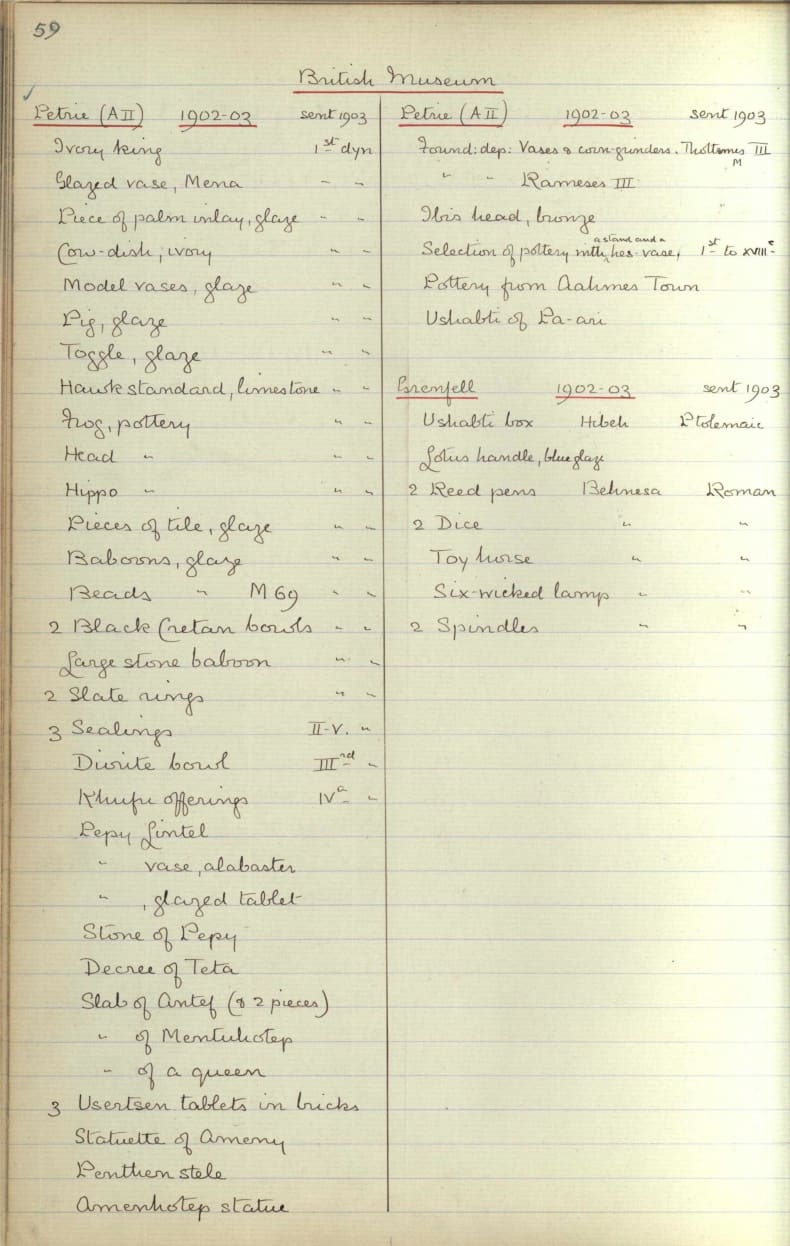
|
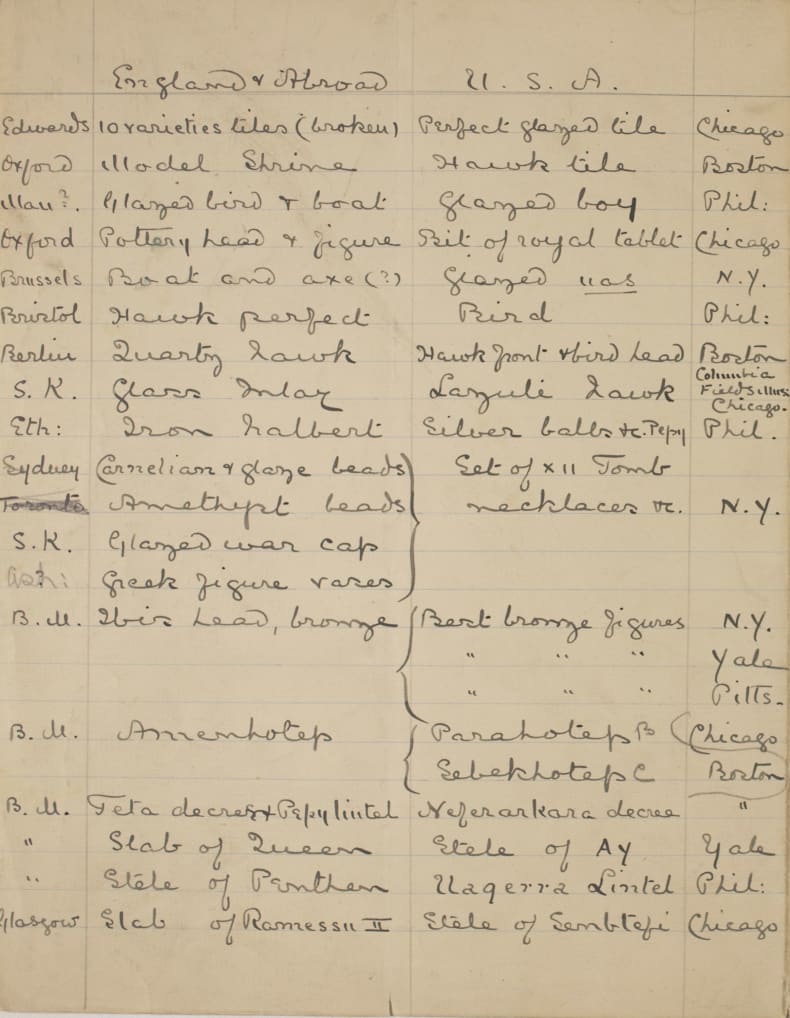
|
A page from the EES distribution register (DIST.REG.02) indicating an 'Amenhotep statue' that was sent to the British Museum (left) next to a corresponding page from Petrie's register (PMA/WFP1/D/11/3) stating that 'Amenhotep' was sent to the 'B.M.' (right).
The museum registration number was written on the statue and can be seen clearly today on its left-hand side. The registration number reads 1903.1010.118, which means that this statue was accessioned on the 10th of October 1903 and was the 118th registered object.
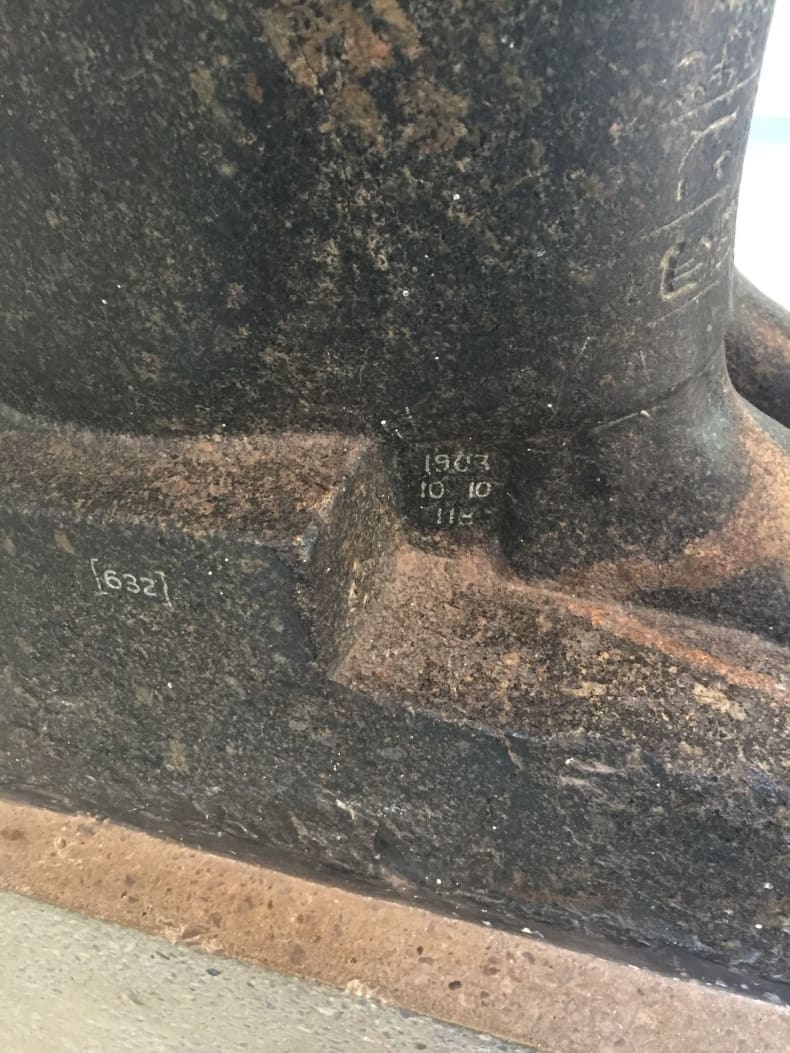
A photo of the statue prominently showing the British Museum registration numbers (BM EA632, © Trustees of the British Museum).
This block statue of Amenhotep can be read in multiple ways. Not only the detailed inscription carved upon its surface, but also the ‘modern’ museum numbering, which links the object to a vast archive. Thus, this quick look at a granodiorite statue in the British Museum highlights the wealth of information archives can hold and how objects have multifaceted stories to tell.
Further Reading and Resources
Artefacts of Excavation 1902-03 Abydos
The British Museum online catalogue record (EA632)
Budge E. A. 1909. A Guide to the Egyptian Galleries (Sculpture). London: British Museum Press.
Petrie W. M. F. 1903. Abydos Part II. London: The Egypt Exploration Society.
Porter B. and Moss R. L. B. 1937. Topographical Bibliography of Ancient Egyptian Hieroglyphic Texts, Reliefs, and Paintings V. Upper Egypt: Sites. Oxford: The Clarendon Press.

